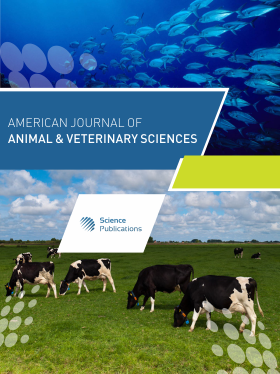Anthelmintic Treatment in Growing Cattle: A Preliminary Study on the Effect of Ricobendazole on the Fecal Microbiome
- 1 Instituto Nacional de Investigación Agropecuaria, Uruguay
Abstract
There is limited information on the impact that anthelmintic treatments exert on the fecal microbiome of growing cattle. This study characterizes the composition and metabolic function of the cattle gut microbiome associated with different levels of parasite Fecal Egg Counts (FEC) and characterizes the fecal microbiome before and after ricobendazole-treatment. The hypothesis was that FEC levels and ricobendazole treatment (8 mL/animal RICOVERM 15 g) alter the fecal microbiome structure and predicted functionality. Fecal samples from Angus yearling steers (live weight: 249±19 kg) with Low-FEC (<100 epg) and High-FEC (840±207 epg) were collected at three-time points: Pre-Treatment (PRE-T) and 3- and 10-days post-treatment (POST-T3 and POST-T10, respectively). After DNA extraction, high-throughput sequencing of bacterial 16S rRNA amplicons and associated bioinformatics analyses were performed. Microbiome analysis revealed evidence of beta-diversity association with time of sampling. Samples collected post-treatment were characterized by higher microbial richness (alpha diversity) and increased abundance (P<0.05) of Alistipes (POST-T3) and Ruminococcaceae_UCG-010 (POST-T10) compared with samples PRE-T. On the other hand, Ruminococcaceae_UCG-014 and Christensenellaceae_ R-7_group genera were increased in samples from PRE-T compared with post-treatment. Predicted metagenome analysis revealed that biosynthesis of nucleotides, nucleosides, vitamins and amino acids were the metabolic pathways most affected due to ricobendazole-treatment. On the other hand, no significant differences in microbial diversity, microbiome composition and predicted metabolic pathways were observed pre-treatment between Low-FEC and High-FEC cattle. In general, these findings revealed that ricobendazole-administration altered the microbial diversity and composition in the feces of cattle, which led to changes in the metabolic pathways of the microbiome. This study provides a first known insight into the relationship between the microbiome and the exposure to ricobendazole in grazing cattle and sets a basis for the development of future studies comprising a larger number of animals and different anthelmintic drugs.
DOI: https://doi.org/10.3844/ajavsp.2022.77.88

- 2,643 Views
- 2,090 Downloads
- 0 Citations
Download
Keywords
- Cattle
- Microbiome
- Anthelmintic
- Parasites
